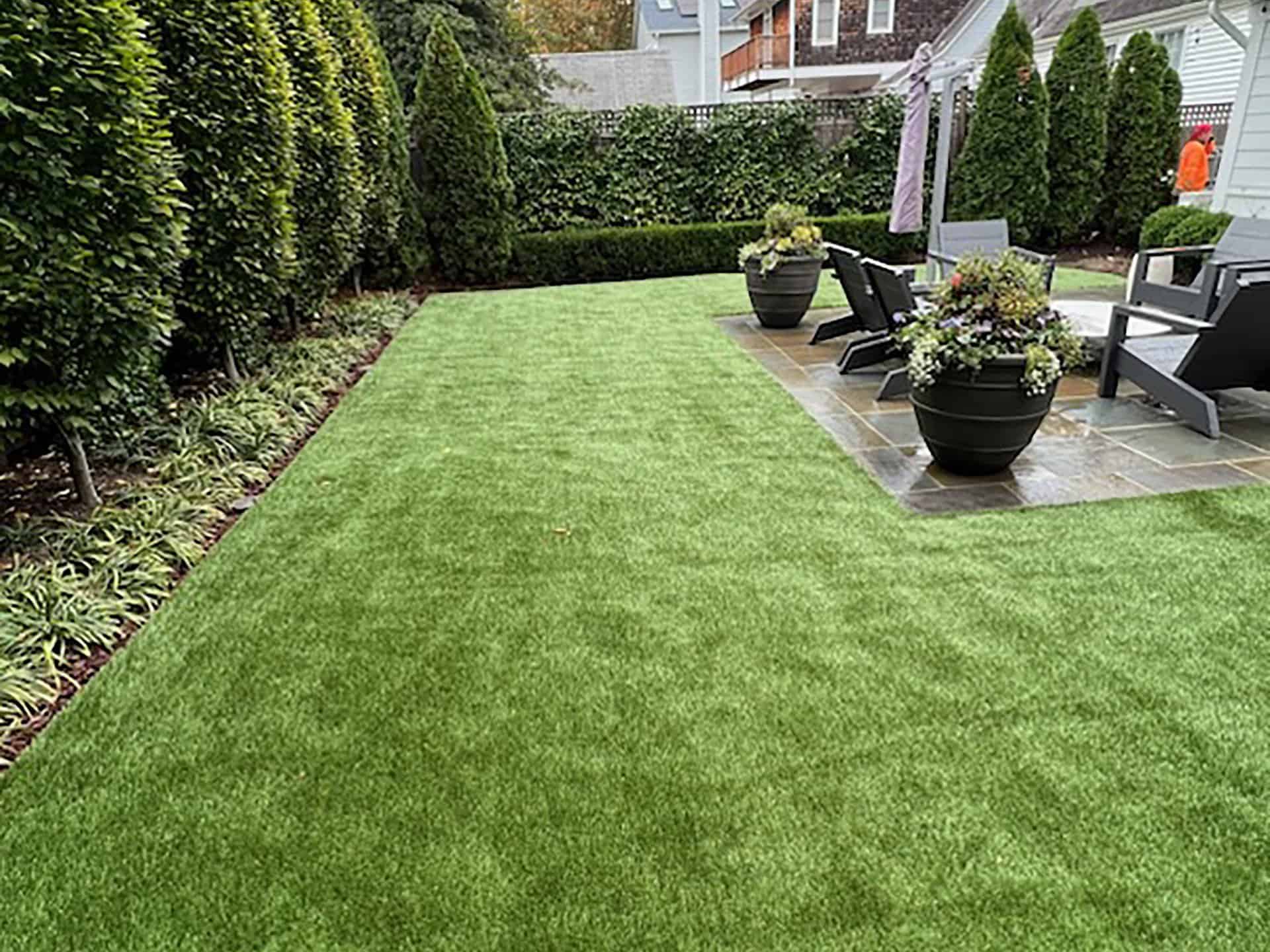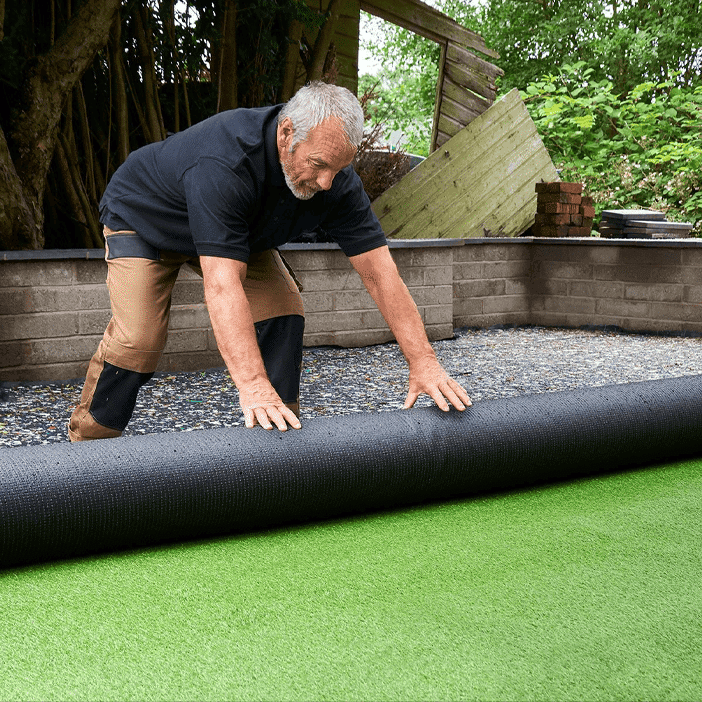Long-Lasting Arizona Artificial Turf for Residential and Business Applications
Long-Lasting Arizona Artificial Turf for Residential and Business Applications
Blog Article
Look Into the Environmental Benefits of Opting for Synthetic Grass Solutions
The adoption of synthetic grass solutions provides an engaging opportunity to attend to pushing environmental obstacles. By substantially reducing water usage and reducing the application of harmful chemicals, these options not just advertise lasting landscape design but likewise secure regional ecosystems.
Water Conservation Advantages
One of the most substantial advantages of synthetic grass is its capacity to preserve water. In contrast, synthetic lawn does not require watering, significantly reducing the overall need for water sources.
By getting rid of the need for normal watering, synthetic grass contributes to sustainable landscape methods and helps alleviate the environmental influence of extreme water intake. The conservation of water expands to the reduction of runoff, which can lead to soil erosion and river air pollution.
Furthermore, the installation of synthetic grass permits municipalities and home owners to allocate water resources a lot more effectively, concentrating on essential uses such as drinking water and agriculture. The shift towards man-made lawn not only promotes accountable water use yet also aligns with wider ecological objectives intended at maintaining natural resources.
As communities progressively prioritize sustainability, the water preservation benefits of synthetic grass provide an engaging situation for its fostering in industrial and domestic landscaping projects.
Decreased Chemical Usage
The shift to synthetic grass substantially lowers the dependence on chemical treatments generally utilized in all-natural grass maintenance. Typical grass management typically involves the application of herbicides, pesticides, and fertilizers to promote development and control parasites. These chemicals can posture threats to human health and wellness, regional wildlife, and the atmosphere, adding to dirt and water contamination.
In contrast, synthetic grass removes the requirement for these dangerous compounds. Once set up, it requires marginal maintenance, mainly consisting of routine cleansing and occasional infill replenishment. This reduction in chemical use not only benefits the prompt atmosphere but additionally adds to more comprehensive environmental stability. By lessening the release of artificial compounds right into the environment, man-made grass advertises healthier dirt and water systems.
In addition, the absence of chemical overflow related to man-made grass installations aids secure neighborhood waterways from air pollution, supporting aquatic life and preserving biodiversity. Arizona artificial turf. As neighborhoods significantly prioritize sustainable methods, selecting synthetic turf provides a viable remedy that lines up with environmental preservation objectives. Via this shift, homeowner can take pleasure in rich environment-friendly spaces without compromising environmental health, paving the means for a much more lasting future
Lower Carbon Impact

Additionally, the setup of fabricated grass can result in considerable water preservation. Natural lawns require substantial quantities of water for watering, which not only includes in the carbon impact related to water extraction and therapy but likewise stress local water resources. On the other hand, synthetic grass requires minimal maintenance, requiring no watering, thus substantially lowering water usage and its associated energy costs.
Additionally, the longevity of man-made lawn adds to its lower carbon effect. With a life expectancy of approximately 15 years or even more, the requirement for regular replacements is decreased, leading to much less waste and lower energy consumption in production and getting rid of typical yard options. Generally, synthetic grass provides a sustainable option for eco aware landscaping.
Environment Preservation
Environment preservation is an important consideration in the debate over landscaping selections, especially when comparing synthetic grass to natural yard. All-natural yard lawns frequently call for considerable maintenance, including the use of plant foods, Find Out More pesticides, and herbicides, which can adversely influence local environments. These chemicals can leach right into the soil and waterways, harming indigenous plants and animals and interfering with local environments.
In comparison, synthetic grass presents a possibility to lower the ecological impact of landscaping. By selecting artificial turf, homeowners can decrease the disruption of all-natural environments connected with typical yard treatment practices. Man-made lawn gets rid of the requirement for harmful chemicals, thereby securing neighboring wildlife and preserving the honesty of surrounding environments. Moreover, the setup of fabricated turf can result in the conversion of previous yard areas right into even more biodiverse landscapes, such as pollinator yards or indigenous plant areas, which can support neighborhood wild animals.
Ultimately, the change to synthetic grass not only saves water and minimizes maintenance initiatives but additionally fosters an extra harmonious connection in between human tasks and the native environment, promoting habitat conservation in the procedure.
Long-Term Sustainability
Long-lasting sustainability is a critical consider reviewing the benefits of synthetic grass over standard turf lawns. One of the most significant advantages of synthetic grass is its toughness; it can last up to 15-20 years with marginal upkeep, whereas natural yard needs frequent reseeding and replacement. This long life decreases the need for continuous resources, such as water, fertilizers, and chemicals, which are vital for maintaining a healthy and balanced turf lawn.
In addition, synthetic lawn adds to a reduction in carbon exhausts connected with grass care equipment. Traditional yards frequently call for gas-powered mowers, leaners, and blowers, every one of which add to air pollution. Arizona artificial turf. On the other hand, fabricated grass eliminates the requirement for such tools, promoting a cleaner setting
Moreover, the manufacturing of man-made lawn progressively makes use of recycled materials, enhancing its sustainability profile. As suppliers adopt green practices, the ecological footprint of synthetic grass proceeds to decrease.

Final Thought
The fostering of fabricated turf remedies provides Check This Out significant ecological advantages, consisting of considerable water conservation, minimized reliance on hazardous chemicals, and a lower carbon impact. Furthermore, fabricated grass aids in preserving natural environments by lessening land disruption and advertising long-lasting sustainability via the use of sturdy materials. Collectively, these variables underscore the capacity of fabricated turf to add positively to ecological wellness and provide a sensible alternative to typical landscaping techniques in an increasingly resource-conscious world.
In comparison, artificial grass does not require watering, substantially lowering the overall demand for water sources. By decreasing the release of synthetic compounds right into the community, fabricated directory turf promotes healthier soil and water systems.
Moreover, the installation of synthetic grass can result in considerable water preservation. In comparison, artificial grass requires very little upkeep, needing no watering, consequently dramatically decreasing water usage and its connected energy prices.

Report this page